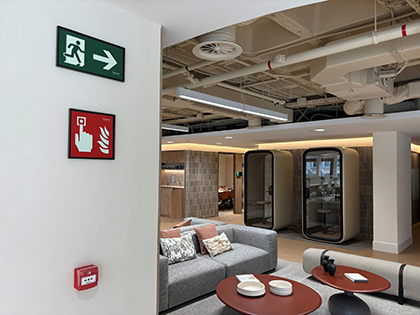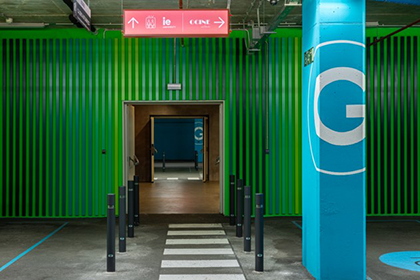Wayfinding Guide: Examples and Applications.
In an increasingly interconnected and dynamic world, complex spaces require solutions that facilitate movement and orientation. This is where wayfinding comes into play, a discipline that goes far beyond simple signage. Its purpose is to guide people intuitively, creating positive and functional experiences in environments such as hospitals, airports, shopping centers, and corporate offices.
What is wayfinding?
Wayfinding, literally "finding the way," is an orientation system designed to help people navigate efficiently through a physical space. This concept combines elements such as directional signs, maps, pictograms, colors, and even the architectural design of the environment. A well-designed wayfinding system not only provides clear information but also leverages human psychology to guide the flow of people naturally.
For example, in an airport, wayfinding ensures that passengers arrive at their gates on time, reducing stress. In hospitals, it helps guide patients and visitors in situations that may be emotionally tense. Even in corporate offices, it establishes spatial hierarchies that reinforce organization and brand identity.

What is it for and how to optimize it?
Wayfinding is crucial for optimizing the user experience in large and complex spaces. It serves to make environments more accessible, improve the flow of people, and minimize confusion or time lost searching for directions. Furthermore, when implemented correctly, it not only fulfills its basic function of guidance but also contributes to the aesthetic and functional design of the place.
To optimize a wayfinding system, several aspects must be considered:
- Types of signage: Directional signs, interactive maps, directories, floor signs, banners, totems, or hanging signs. It is also common to use plaques or vinyls to name rooms, as well as adaptive lighting to identify, for example, available spaces in a parking lot.
- Use of color and typography: Design signs with colors that differentiate areas or levels, and use clear, legible typography. A lowercase font, as a rule, is always more readable than one that only uses uppercase. Additionally, tracking should be respected, and uniform spacing for each text should be established with proportional parameters set in advance.
- Consistency: A uniform style must be maintained across all elements, materials, and finishes to align with the corporate identity of the place. This is where monochrome logos should be used to avoid creating a mix of logos with different colors and fonts.
- Technology: Incorporate digital screens and mobile apps for a dynamic and personalized experience, where users can navigate any facility and search for different locations.

Emergency signage is a fundamental pillar of wayfinding, designed to guide people quickly and safely in critical situations. Elements such as luminescent signs ensure visibility in adverse conditions, clearly identifying elements such as hydrants, fire hoses, and emergency exits. This allows for an efficient response in case of need and a rapid evacuation. Through strategic and intuitive design, this signage organizes the flow toward safe zones, integrating arrows, evacuation maps, and international pictograms to ensure effective orientation. There is also emergency signage with independent lighting, mainly used in hospitals. In complex environments such as offices, shopping centers, hospitals, or airports, the ability to quickly locate emergency exits or safety points can make the difference in an evacuation. Beyond being a legal requirement, it is an essential tool for collective safety.

Wayfinding is not just a tool for orientation; it is a design strategy that enhances the functionality, accessibility, and aesthetics of spaces. A well-designed system not only guides people but also reinforces the identity of the place, creating a memorable and smooth experience. At Dysegna, we understand the importance of these systems and work to develop solutions that not only fulfill their purpose but also enrich every space in which they are implemented.


